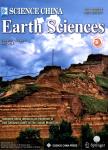Occurrence of organochlorine pollutants in the eggs and dropping-amended soil of Antarctic large animals and its ecological significance
Occurrence of organochlorine pollutants in the eggs and dropping-amended soil of Antarctic large animals and its ecological significance作者机构:Friedrich-Schiller-Universitt JenaLehrbereich LebensmittelchemieDornburger Str. 25D-07743 JenaGermany
出 版 物:《Science China Earth Sciences》 (中国科学(地球科学英文版))
年 卷 期:2007年第50卷第7期
页 面:1086-1096页
学科分类:083002[工学-环境工程] 0830[工学-环境科学与工程(可授工学、理学、农学学位)] 07[理学] 08[工学] 09[农学] 0903[农学-农业资源与环境] 0713[理学-生态学]
基 金:Supported by the National Natural Science Foundation of China (Grant Nos. 40576003 and 40276037)
主 题:persistent organochlorine pollutant animal habitats dropping-amended soil seabird egg Antarctica
摘 要:Persistent organochlorine pollutants (POPs) are analyzed for the dropping-amended soils from the habitats of Antarctic seabirds and seals in Fildes Peninsula and Ardley Island. The concentration ranges are 0.21 to 3.85 ng/g for polychlorinated biphenyls (ΣPCBs),0.09 to 2.01 ng/g for organochlorine pesticides (ΣDDT),and 0.06 to 0.76 ng/g for hexachlorocyclohexanes (HCHs). Among these,hepata-chlorobiphenyls,hexachlorobiphenyls,p,p′-DDE and α-HCH compounds are dominant. The concentra-tion ranges of ΣPCB,DDT and HCH in the eggs of skuas were 91.9―515.5 ng/g,56.6―304.4 ng/g and 0.5―2.0 ng/g respectively; those in the eggs of penguins were 0.4―0.9 ng/g,2.4―10.3 ng/g and 0.1― 0.4 ng/g; and those in the eggs of giant petrel were 38.1―81.7 ng/g,12.7―53.7 ng/g and 0.5―1.5 ng/g respectively. The dominant POP compounds in the eggs are PCB180,PCB153,p,p′-DDE and hexa-chlorobenzene (HCB). The present study shows that the concentration of POPs in the sea-bird-inhabited-dropping-amended soil varies with the extent of predation and nest occupancy of dif-ferent seabird populations. Statistical analysis on the POP concentrations from the different seabird eggs implies that the difference in the bio-concentration levels of the birds depends on the bio-habits of the species,such as the range of activity,distance of immigration,feeding pattern,and nest occupation. Among these,the most important factor is the location of the seabirds in the food chain and their feeding pattern. This shows that POPs accumulated in the seabirds resulted from the bio-concentration through the food chain. In addtion,210Pb dating for the dropping-amended soils (AD1-a and AD2) was performed,which provided the POP accumulation rate and the historic record for the soil profile. It indicates that POP will continuously affect the Antarctic ecosystem for a long time.



